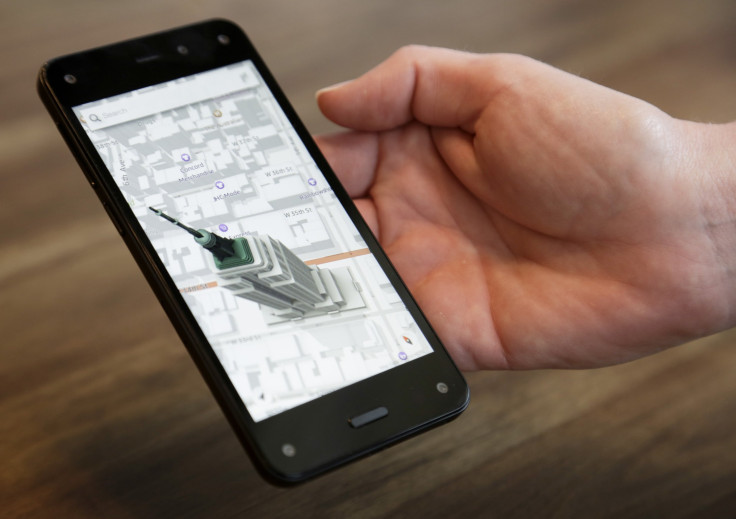Amazon Fire Phone: Can OS Update Save Jeff Bezos’ Dying Smartphone?

Amazon has already admitted that its first iteration of the Fire Phone was a flop, but the e-commerce company is not giving up on its smartphone. The Fire Phone has gotten a software update that packs a host of new features. Is it enough to spark interest in a device that has failed to catch on with consumers in the nearly five months it’s been on the market?
Amazon released major new updates for both models of the Fire Phone Sunday; the AT&T version will receive Fire OS 3.6.5 and the unlocked GSM version gets Fire OS 3.6.8. Both models receive the same new features and enhancements, such as more than 2,000 famous artworks added to the Fire Phone’s optical recognition system and a text translation engine that now supports English, French, German, Italian and Spanish.
Despite the update, Amazon may still struggle to capture consumer interest, primarily because the Android-based Fire OS differs so significantly from Google’s stock Android, said Gartner analyst Ken Dulaney.
“Consumers like to play it safe in terms of knowing that the applications that they want are going to be on the platform,” Dulaney said. Google’s Android and Apple’s iOS rule the smartphone market. With these two on top, other software ecosystems, like Windows and BlackBerry, in addition to Amazon, have failed to capture any significant share at all. Moreover, Amazon’s App Store struggles to keep up with Google Play and the Apple App store with fewer developers creating Amazon versions of popular applications.
Things went downhill quickly for the Amazon Fire Phone ever since its July, 2014 launch. The device was expected to be an affordable option for customers, but it debuted with a premium price of $649 unlocked and $199.99 with a two-year contract. After several price cuts, Amazon executives were forced to concede that the company made missteps with the Fire Phone, first being its price and second being its carrier exclusivity on AT&T. The device simply didn’t have the cross-carrier availability it needed for a successful launch.
The Fire Phone has reportedly sold only about 35,000 units since launch. Not only has Amazon taken a $170 million loss on the device, finance chief Thomas Szkutak said at the end of the third quarter there was about $83 million worth of unsold Fire phone inventory.
Amazon insists it's not giving up. The company’s vice president of devices, Jorrit Van der Meulen, noted to the Guardian in November that the first model of its Kindle e-reader was also not well received. The company plans to continue with a second iteration of the Fire Phone, which may be released sometime in 2016, according to Venture Beat.
Moving forward, Amazon will have to remember that it is not inventing a new market as it did with its Kindle e-readers but rather is competing in a highly saturated space. Its primary aim should be hawking future Fire Phones at unsubsidized prices of under $200, according to Gartner’s Dulaney. Another option would be getting rid of gimmicky features like its Dynamic Perspective" 3D Technology, which is the mainstay of the Fire Phone, but has not done much to entice consumers.
“A lot of buyers today, when they buy high-end phones, a lot of the stuff is just eye-candy. They can’t do anything with it after a while and it goes into disuse,” Dulaney said. “Does it take good pictures? Is it a good value for the money? Are the apps I’m going to want going to be there? That’s basically what people want.”
© Copyright IBTimes 2024. All rights reserved.












